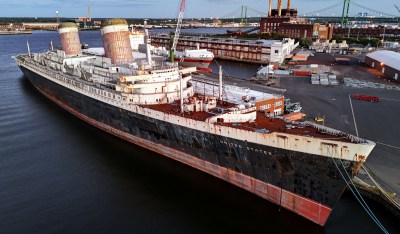When we last brought you word of the SS United States, the future of the storied vessel was unclear. Since 1996, the 990 foot (302 meter) ship — the largest ocean liner ever to be constructed in the United States — had been wasting away at Pier 82 in Philadelphia. While the SS United States Conservancy was formed in 2009 to support the ship financially and attempt to redevelop it into a tourist attraction, their limited funding meant little could be done to restore or even maintain it. In January of 2024, frustrated by the lack of progress, the owners of the pier took the Conservancy to court and began the process of evicting the once-great liner.

It was hoped that a last-minute investor might appear, allowing the Conservancy to move the ship to a new home. But unfortunately, the only offer that came in wasn’t quite what fans of the vessel had in mind: Florida’s Okaloosa County offered $1 million to purchase the ship so they could sink it and turn it into the world’s largest artificial reef.
The Conservancy originally considered it a contingency offer, stating that they would only accept it if no other options to save the ship presented themselves. But by October of 2024, with time running out, they accepted Okaloosa’s offer as a more preferable fate for the United States than being scrapped.
It at least means the ship will remain intact — acting not only as an important refuge for aquatic life, but as a destination for recreational divers for decades to come. The Conservancy has also announced plans to open a museum in Okaloosa, where artifacts from the ship will be on display.
Continue reading “How To Sink A Ship: Preparing The SS United States For Its Final Journey”

















